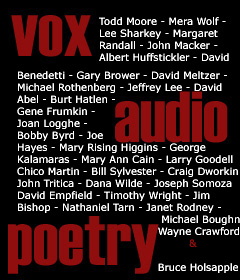
Lol Coxhill
Alone and Together
Lol Coxhill / saxophones, Stevie Wishart / violin, hurdy gurdy, Marcio Mattos / cello, electronics, one track only
Lol Coxhill has come a long way since Joni Mitchell saw a “one man band by the quick lunch stand” and felt touched by the sincerity and integrity which free improvised music has always represented. Today he has an international reputation, and his position in the history books seems assured. Although he can be overshadowed by the massive presence of Evan Parker, to whose music his own bears a superficial resemblance, Coxhill’s playing is distinctively different from the younger man’s and it would be a crime to under-value it.

Lol Coxhill | still video image by David Reid
This disc compiles several sessions too short to be released independently: three duets with Stevie Wishart, one with Mattos and the entirety of Coxhill’s performance at the 1999 LMC festival. This latter is surely the centrepiece of the release, a twenty-two-minute extemporisation on soprano, the member of the saxophone family with which he is most closely associated. Far from the nods to Lacy which soprano specialists usually find themselves making, Coxhill’s music seems to take Sonny Rollins’s motivic style and bring it up-to-date with a wonderful fluidity and a tendency to embrace multiphonics, high harmonics and other “extended” techniques as a part of the melodic flow. It’s an impressive, virtuoso performance which, however, doesn’t over-egg Coxhill’s technical prowess, which he hardly has to prove at this late stage.
The festival solo is jazzy, but it is above all lyrical. At times it can touch on harsher territory, but always in the service of the line, a line which Coxhill spins out with enormous invention over a long period, something which is extremely hard to do but which this veteran solo performer seems to carry off with ease. The other extended solo on this release forms the last track from the session at which the Wishart duets were recorded way back in 1991, this time on sopranino. His voice on the instrument is thin and reedy, without the penetrating tone of the larger horn, but his musical imagination is very much intact, again taking a linear approach, following the notes and embellishing them with sometimes rather squeaky timbral effects.

Stevie Wishart
Wishart’s hurdy gurdy greatly dignifies one of their duets; it makes a wonderful sound, and her development of a variety of articulations means she is able to provide droning backdrops and incisive commentary at the same time, something which benefits Coxhill no end. It’s a beautiful and very unusual track; the two featuring violin are more spikey but no less musical. Here, Wishart’s styrofoam timbres often coax Coxhill — who’s locked into a pinched tone anyway — into less melodic waters, pushing the percussive and gratingly nasty sounds of the sopranino to the fore.
That said, he never abandons note-based playing entirely, and Wishart’s fiddle, although it certainly doesn’t sound pretty, has a quick intelligence which keeps the music rushing along. These performances are faster-moving and more rooted in the conventions of free improv than the others on this album, but there’s no loss of clever, thoughtful interplay. When Coxhill switches back to soprano on the second violin duo, it’s something of a relief, his rubbery, frenetic sopranino quite suddenly giving way to something altogether more rounded and elegant.

Marcio Mattos
Mattos only appears for one, thirteen-minute track. He’s spectacular on either bass or cello, one of the fastest, most furiously restless players in London, and his time with Coxhill is extremely well-spent. The electronics work well, and overall this track has something aopproaching an ensemble sound. Exciting, fast-talking improvisation which is completely accomplished and realised with fearsome precision. Richard Cochrane



Leave a Reply